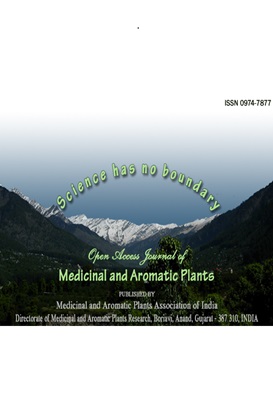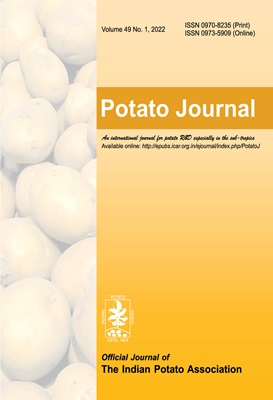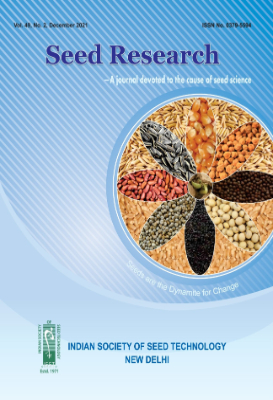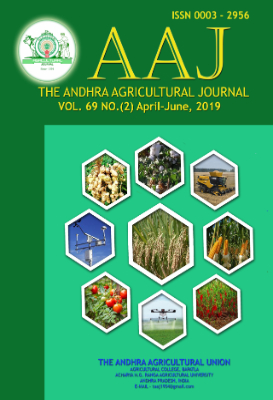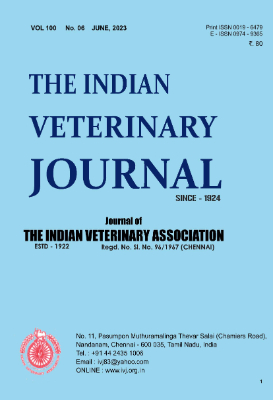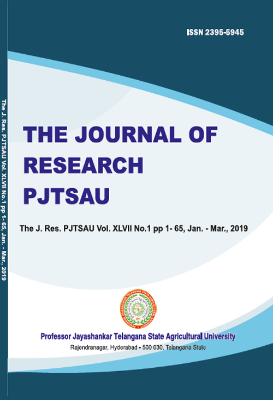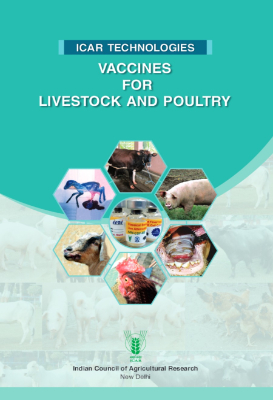E-Resources
ORYZA-An International Journal of Rice
Focus and Scope Association of Rice Research Workers (ARRW) intends to foster rice research for widening the horizons of rice science and to increase world rice production. It is open to all scientist engaged in rice research. ARRW publishes peer reviewed original research articles, short communications and review articles on all aspects of rice research, covering basic and applied work on crop improvement, crop management, crop protection and environmental security. Peer Review Process The review policy of articles as follows 1. Internal review by editorial committee of the association within a month of submission. 2. If agreed by internal reviewer, then sent for external reviewing to the subject matter specialist. Criteria of Judgment of Submission: The criteria for judgment of submitted article is as follows: 1. Rice and rice based research 2. Innovativeness of the work 3. Importance of the submitted research at present 4. Soundness of the methodology 5. Proper discussion with recent literature Time taken to conduct the review: Usually 2 to 8 weeks Publication Frequency Journal is published quarterly. Open Access Policy This journal provides immediate open access to its content on the principle that making research freely available to the public supports a greater global exchange of knowledge. Sponsors Indian Council of Agriculutral Research Journal History For quick dissemination of research information amongst the rice scientists of the country and abroad, to help increase rice production, the Association of Rice Research Workers (ARRW) was founded in 1961, under the President ship of Dr. R.H. Richharia, the then Director, Central Rice Research Institute, Cuttack. Copyright: Association of Rice Research Workers
Potato Journal
Potato Journal; formerly (till year 2003) known as Journal of the Indian Potato Association, is official journal of the Indian Potato Association (IPA).The IPA was established in 1974 and registered under the Indian Societies Registration Act XXI of 1860 (registration No. 206/74; dated 15th June 1974). The journal covers all areas of potato research including Genetics, Breeding, Biotechnology, Agronomy, Soil Science, Seed Technology, Plant Pathology, Entomology, Storage, Physiology, Biochemistry, Post Harvest Technology, Agricultural Economics, Marketing, Statistics, Extension and Farm Machinery. The journal is published in two issues to form one volume per year. Information for authors can be found at the end of each issue. Acknowledgments to reviewers are published in the December issue. The IPA was founded with the objectives to advance the cause of potato research and development. Besides publishing Potato Journal (Formerly Journal of Indian Potato Association), the IPA also holds conferences, symposia and workshops to provide opportunities for personal contacts among potato workers to promote and exchange scientific and other information and to develop means of interaction among potato researchers, industry, farmers and consumers.
Seed Research
Indian Society of Seed Technology, F-5, A Block NASC Complex, Dev Prakash Shastri Marg, New Delhi is a registered professional society under registration number 4888 since 1971. Seed Research is the Official publication of Indian Society of Seed Technology (ISST). It publishes original research papers in the field of 'Seed Research'. It is the scientific publication of the Indian Society of Seed Technology (ISST), which is brought out in two issues per year consisting of original papers and review articles in all areas of seed science and technology e.g. seed production, sampling, testing, enhancement, processing, physiology, entomology, pathology, storage, genetic conservation, habitat regeneration, seed business, plant variety protection, policy issues, etc. and allied fields since its inception from 1973.
The Andhra Agricultural Journal
The Andhra Agricultural Union was started in 1954 at Agricultural College, Bapatla. A scientific Journal The Andhra Agricultural Journal is published by the Union since its inception to educate and encourage the agricultural science fraternity. It publishes original scientific work related to strategic and applied studies in all aspects of agricultural and allied sciences, as well as reviews of scientific topics of current agricultural relevance. In the beginning, it was a bimonthly journal and it was transformed into a Quarterly Journal from 1982 onwards and registered with the Registrar of News Papers of India as Quarterly under The Press and Registration of Books Act, 1860 with Registration No. 5751/57. The present NAAS rating of the Journal is 3.61.
The Indian Journal of Agricultural Sciences
A journal devoted to experimental agriculture and abstracted by all the major abstracting services. It includes articles on cytology, genetics, breeding, agronomy, soil science, horticulture, water use, microbiology, plant diseases and pest, agricultural engineering, economics and statistics with emphasis on original articles, from India and countries having similar agricultural conditions.
The Indian Journal of Genetics and Plant Breeding
Focus and Scope The Indian Journal of Genetics and Plant Breeding is a periodical for the publication of records of original research in all branches of genetics, plant breeding and cytology, including human genetics, molecular biology and biotechnology, and other cognate sciences of sufficient importance and of such a character as to be of primary interest to the geneticist and plant breeders. Publication Frequency THe journal is published quarterly. Open Access Policy This journal provides immediate open access to its content on the principle that making research freely available to the public supports a greater global exchange of knowledge. Sponsors
The Indian Veterinary Journal
The Indian Veterinary Association (IVA) is the apex organization of more than 65,000 veterinarians of the country spread over from Kashmir to Kanyakumari and Gujarat to Nagaland. Every State and UT has its own veterinary association, which is affiliated to this apex parent body. The Indian Veterinary Journal (IVJ) is the official organ of IVA and offices of both IVA and IVJ are located at No. 7/11, Pasumpon Muthuramalinga Thevar Salai, (Chamiers Road) Nandanam, Chennai 600 035. IVJ has a history of more than ninety-eight years and is being published from 1924 onwards. The Indian Veterinary Journal, popularly known as IVJ among veterinarians is a monthly periodical of international status devoted to the cause of updating knowledge of the of veterinarians with its research and clinical articles. It is a monthly journal with twelve issues in a year with ISSN (Print): 0019-6479; ISSN (online): 0974-9365. Website of this journal is http://www.ivj.co.in & https://epubs.icar.org.in/index.php/IVJ . The Journal publishes original work in veterinary medicine, animal health production, veterinary clinical subjects and allied disciplines such as Dairy development, livestock and poultry husbandry etc., The Journal is of particular importance to field veterinarians, veterinary faculty, veterinary practitioners, researchers, veterinarians from industry and Under graduate, Post graduate and doctoral students from universities of Veterinary & Animal Sciences. The Indian Veterinary Journal has an editorial board comprising of members at the level of Vice Chancellors of the leading Veterinary Universities and IVA president and members representing various states in India. In addition an exclusive International Editorial Advisory Board (IEAB) functions with members from overseas universities/Institutes from United States, United Kingdom, Australia, Hong Kong, Vietnam and Bangladesh.
The Journal of Research, PJTSAU
Focus and Scope The Journal consists of research publications in the field of agriculture and allied sciences authored by scientists, students and other eminent agriculture scientists on relevant and time specific research. The Journal publishes National as well as International research papers. Peer Review Process Journal has specific peer review policy for evaluating the research paper before publishing. It includes following steps First screening by Chief Editor of Journal. If accepted it is sent to concerned subject reviewers(2). And then it is sent to author for necessary modifications. After receiving from author it is sent for Language (English) screening. The final screening is done by Chief Editor and accepted for publication. The total process is completed between 30-45 days and four reviewers are involved in accepting the paper for publication. Publication Frequency
Vaccines for Livestock and Poultry
Livestock sector is a key subsector of the Indian agriculture. It is an important
livelihood source for farmers, supporting agriculture and contributing to
the health and nutritional security of the household as well as supplementing
incomes with employment opportunities. It is emerging as an important growth
engine of the Indian economy and has registered a growth of 6.1% per annum.
The most effective way to increase livestock productivity and minimize
losses from disease morbidity and mortality is by monitoring health, and
diagnosis and control of diseases by using effective vaccines. The R & D work
on veterinary biologicals in the country has led to successful eradication of three
important diseases viz, rinderpest, African horse sickness and contagious bovine
pleuropneumonia from the country.
Control of several bacterial and viral diseases of cattle and buffaloes (FMD,
HS, BQ, anthrax), sheep and goats (PPR, sheeppox, goatpox, enterotoxaemia),
pigs (classical swine fever) and poultry (Newcastle disease, infectious bursal
disease, avian influenza, infectious bronchitis) is being done through the use of
prophylactic vaccines developed by Animal Science Institutes of ICAR. Biologicals
developed have been transferred to various commercial manufacturers and state
biological production units to ensure adequate supply in the country.
The Animal Science Institutes of the Council are continuously toiling to
develop better, apt and effective vaccines for livestock and poultry diseases and
to improve and refine the current ones in the light of epidemiological findings
and contemporary advancement in technology. This is evident from the list of
vaccines compiled in this document that includes a sub-viral particle-based
recombinant vaccine. Efforts are also going on for the development of DIVAcapable marker vaccines, combined vaccines and thermo-stable vaccines.
I am confident that this informative compilation of vaccine technologies
developed by the ICAR will help all those engaged in animal health management
and disease control in the country.


